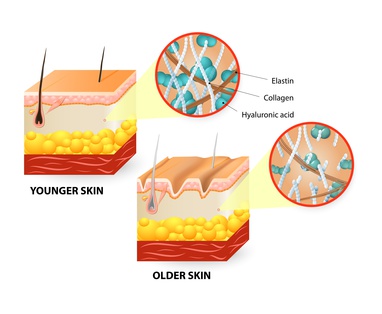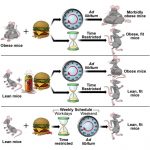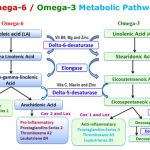Hyaluronic Acid Foods
Hyaluronic acid is a natural chemical substance found in the body. The highest concentrations are found in the joints and eyes. Also known hyaluron, it plays a pivotal role in the maintenance of healthy connective tissue. Hyaluronic acid foods also critical for maintaining good eye health.
Hyaluronic acid levels tend to diminish with age, and this is partly why elderly individuals have a tendency to develop osteoarthritis. In fact, it is generally recommended that individuals with osteoarthritis make sure they’re eating hyaluronic acid foods or foods that help the body to synthesize hyaluronic acid. Hyaluron is quite effective at relieving much of the pain and discomfort associated with osteoarthritis and giving skin a more youthful look.
Getting More Hyaluronic Acid Foods in Your Diet
If you are interested in making sure your diet contains adequate levels of hyaluron, you need to learn which foods are hyaluronic acid foods. A great variety of foods are rich in hyaluronic acid or will help promote your body’s synthesis of it. For best results, it is a good idea to eat as many different hyaluronic acid rich foods as possible.

Animal products are considered by far to be the best dietary source of hyaluronic acid. Because it is so highly concentrated in animal connective tissues, meats with large amounts of skin and other connective tissues are chock-full of hyaluronic acid. Soups and stews made with unskinned chicken are a tasty way to raise your hyaluron levels. You should also consider trying liver, as this is as good a source of hyaluronic acid as iron.
Lots of vegetables have some hyaluronic acid, but you should try to eat the ones that have the highest levels of it. Starchy roots and tubers like potatoes and sweet potatoes are some of the very best vegetable sources of hyaluronic acid. Sweet potatoes have the additional advantage of having high levels of magnesium. The mineral magnesium is essential for the synthesis of hyaluronic acid in the body. Many people struggle to get adequate amounts of magnesium in their diet; this is largely because the typical Western diet has low levels of magnesium.
Both potatoes and sweet potatoes are very versatile foods. Whatever your tastes are as far as cuisine goes, you can find a way to fit potatoes and sweet potatoes into your diet. If you have something of a sweet tooth, a little sugar or artificial sweetener and cinnamon added to mashed potatoes or mashed sweet potatoes can become a delicious dessert.
If you prefer fruits over vegetables, you’ll be glad to know that while there are few hyaluronic acid rich fruits, there are many vitamin C rich fruits that will help to boost your body’s production of hyaluronic acid. Like magnesium, vitamin C is critical for the synthesis of hyaluronic acid. Without adequate levels of vitamin C, your body will not gain the full benefit of foods containing hyaluronic acid.
Bananas are one of the few fruit foods that contain hyaluronic acid. Bananas are inexpensive and available at just about every supermarket. You shouldn’t have any problems finding them. Besides having high levels of hyaluronic acid, bananas are rich in hyaluronic acid-promoting magnesium. They are wonderful for snacks because their high fiber content ensures that they do not cause spikes in blood sugar.
Oranges, guavas, and grapefruits are all excellent sources of vitamin C. If you want to make sure that your body is synthesizing all the hyaluronic acid that it can, you should make sure you are consuming at least one serving of vitamin C rich fruit a day. While it can be easy to forget to eat enough fruit on a regular basis, if you care about your body’s hyaluronic acid levels, you will have to make the effort to remember.
While not rich in hyaluronic acid, or as effective at promoting the synthesis of hyaluronic acid as many vegetables and fruits, soy products can be a great way to help bump up your hyaluronic acid levels if used intelligently. Soy products are rich in chemical compounds known as isoflavones. Isoflavones help raise estrogen levels in the body; one of estrogen’s more obscure properties is its ability to elevate hyaluronic acid levels. A small amount of soy each day can help put you on target to achieving your hyaluronic acid related goals.
Consuming more hyaluronic acid foods or foods rich in hyaluronic acid that promote the synthesis of hyaluronic acid can be challenging. Just remember to take it slowly, and start by making gradual changes to your diet. If you do this, it will not take you very long to start raising your hyaluronic acid levels significantly.
Magnesium-Rich Foods
Our bodies require magnesium to produce hyaluronic acid, so eating magnesium-rich foods is a must. Villagers in a specific region of Japan are known for their youthfulness well into their 90s. Researchers believe the high magnesium content of their dietary staples is at least partly to thank because they’re boosting their natural HA levels for supple skin and strong joints.*
Luckily, some of the tastiest and most convenient veggies double as great sources of magnesium. Leafy greens, sweet potatoes, asparagus, broccoli and avocado are a few excellent foods that supply a dose of HA-supporting magnesium. A favorite side dish at my house is a roasted sweet potato topped with grass-fed butter, steamed kale and nutritional yeast – a powerhouse of skin-loving nutritional support!
http://hyaluronicacidwiki.com/hyaluronic-acid-supplements/
| Functions and Uses of HA |  |
HA has a lot of important physiological and biological functions. It plays a structural role in cartilage and other tissues. It associates with proteins that are enriched in the other types of glycosaminoglycans to form proteoglycans. HA is directly or indirectly related to many cell functions like cell proliferation, recognition, and locomotion, which will contribute to its tissue healing properties. [17] Because of its unique physiochemical properties and most importantly the non-immunogenicity of the highly purified form, Hyaluronan has already found medical applications for many years. Some important clinical applications are:
- It is used as dermal filler in the field of cosmetic dermatology. [18]
- Scar formation in the surgical wounds can be prevented by the administration of HA during surgery. [19]
- Many reports have attested to the effects of exogenous Hyaluronan in producing beneficial wound healing outcomes. [20]
- In orthopedics, for treatment osteoarthritis of the knee and rheumatoid arthritis. [21]
- In ophthalmology, for treatment of cataract and xeropthalmia.
- Hyaluronan has also been explored in the field of tissue engineering. Because of its significant role during organogenesis, cell migration and development in general. [22]
- Modifications to Hyaluronan include esterification and cross-linking to provide some structure and rigidity to gel for the cell-seeding purpose. [23]
- More recently, HA has been investigated as a drug delivery agent for various routes of administration, including ophthalmic, nasal, pulmonary, parenteral, and topical. [24]
| HA and Periodontal Disease |  |
HA is an essential component of the periodontal ligament matrix and plays various important roles in cell adhesion, migration and differentiation mediated by the various HA binding proteins and cell-surface receptors such as CD44. [25] HA has been studied as a metabolite or diagnostic marker of inflammation in the gingival crevicular fluid (GCF) as well as a significant factor in growth, development and repair of tissues. [26]
Hyaluronic Acid in Synovial fluid
 Our joints (like the elbows and knees) are surrounded by a membrane called the synovial membrane which forms a capsule around the ends of the two articulating bones. This membrane secretes a liquid called the synovial fluid. Synovial fluid is a viscous fluid with the consistency of motor oil. It has many functions, but none more than providing the elastic shock absorbing properties of the joint. Its second most important function in the joint is to carry nutrients to the cartilage and to also remove waste from the joint capsule.
Our joints (like the elbows and knees) are surrounded by a membrane called the synovial membrane which forms a capsule around the ends of the two articulating bones. This membrane secretes a liquid called the synovial fluid. Synovial fluid is a viscous fluid with the consistency of motor oil. It has many functions, but none more than providing the elastic shock absorbing properties of the joint. Its second most important function in the joint is to carry nutrients to the cartilage and to also remove waste from the joint capsule.
Dietary Hyaluronic Acid Migrates into the Skin of Rats
This study’s results have shown the possibility that orally ingested 14C-hyaluronic acid was taken up into the body and migrated into the skin. Further study is required, including the molecular weight in the blood of orally ingested hyaluronic acid and confirmation by skin tissue extraction. Also, after orally ingested hyaluronic acid was used by tissues, 90% or more was metabolized and eliminated in expired air and urine, suggesting that there was no excessive accumulation in the body.
http://www.hindawi.com/journals/tswj/2014/378024/
Hyaluronic Acid, The New Frontier
While hyaluronic acid was discovered in 1934, until 10 years ago the HA molecule was thought to be passive and simply a structural component (like a 2 x 4 in a wall). Despite its simple structure, dramatic scientific research is now showing that HA is one of the most biologically active compounds in the human body.* These functional characteristics of HA are causing scientists to change its nickname from a space filling “goo” to “magic glue.”*
Hyaluronic acid is now believed to play a functional role in the formation of new body tissue, providing the organizing matrix around which new connective tissue is built.* In essence, hyaluronic acid acts as a template to assist in the formation of body structure.* A single molecule of HA, which may be quite long, can attach to hundreds of other structural protein molecules, assisting in the formation of body structure.*
Natural Supplement to Maintain Structure
The new science is showing that hyaluronic acid may operate as the brains of this operation, helping to regulate how the body grows, stabilizes, and maintains structure.* An elaborate and complex array of HA enzymes, cell surface receptors, and binding proteins are being identified.* Much of this new research is focusing on the role of HA in endothelial cells that line arteries, seeking to identify how HA assists in the maintenance of the health of the circulatory system.*
This does not mean that HA replaces other structural support nutrients such as dietary protein, glucosamine, chondroitin, MSM sulfur, vitamin C, or bioflavonoids. Indeed, HA is a relatively small amount of the final structural material of any body tissue. Other structural nutrients are very important as they are attached to HA to produce the finished product.* However, HA has special importance amongst all structural support nutrients.* Hyaluronic acid is not only required as a fundamental structural nutrient, it is intimately involved with managing the building and remodeling processes.* It appears to be a guiding force behind organizing body structure.*
How Your Body Makes Hyaluronic Acid
Cells throughout the human body produce hyaluronic acid. The million dollar question is: Are they making enough? The starting nutrients your body uses are two sugars, D-Glucuronic acid and N-Acetyl Glucosamine. D-Glucuronic acid occurs widely in the plant kingdom and is a component of cellulose and soluble fiber gums.
N-Acetyl Glucosamine (NAG) is a different nutrient than the glucosamine sulfate or glucosamine hydrochloride found in most joint support supplements. It is made by combining the amino acid glutamine to glucose. A primary location of NAG synthesis is by the endothelial cells lining the GI tract, a process that may not work so well if there is digestive distress.* Our GI & Muscle Helper™ supplement is a combination of glutamine and already formed N-Acetyl-Glucosamine, nutrients that readily support HA formation.*
The stimulus for cells to make HA can come from a variety of metabolic signals, responding to the common theme for increased body need for structural support. Thus, exercise is one way to help stimulate HA production. Cells throughout the body make HA as part of the natural repair and recovery process.*
Cells use an enzyme called hyaluronic acid synthase to assemble the HA molecule. This enzyme requires magnesium and energy (ATP) to work properly.* Hyaluronic acid synthase is inhibited by stress hormones.*
http://www.wellnessresources.com/products/hyaluronic_acid.php
Hyaluronic Acid: Not with cancer, never with aromatase inhibitors.
HA probably does have some effect when taken orally; patients tell me that it relieves some of the joint discomfort they experience as a side effect while taking aromatase inhibitors.[more info on aromatase inhibitors] These drugs, Arimidex is the most widely used, block estrogen production completely. They are the new drug of choice to prevent breast cancer recurrence, probably soon to supplant tamoxifen. The research on aromatase inhibitors looks good (so far) and they may be safer and more effective than tamoxifen. Unfortunately the aromatase inhibitors may cause some uncomfortable side effects. Stopping estrogen production as dramatically as they do, tends to “dry up” the body. Tissue becomes less moist, wrinkles become more obvious and most importantly, joints tend to feel irritated, sore and inflamed.
One study demonstrates HA increases attachment of breast and ovarian cancer. Cancer cells seem to want to degrade, or simply put, eat, hyaluronen. The more capable they are at degrading HA, the more invasive they are. This HA business is also important in other cancers as well including, lung cancer , ovarian cancer . When the CD44 velcro protein latches onto a healthy cell, it stimulates the cell to make more HA and the cancer cells somehow use the extra HA for their own benefit. [xii]
This knowledge about HA and cancer is well enough understood that researchers are using it to devise new cancer treatments. They make oligomers, chemicals that look very similar to HA, and use these almost look-a-like chemicals to block tumor growth.
Obviously given this background, Hyaluronic acid should not be taken by anyone with breast cancer, ovarian cancer or lung cancer. By extension, although at this point unproven, it should not be taken by people with other cancers either.
http://www.denvernaturopathic.com/news/hyaluronicacid.html






